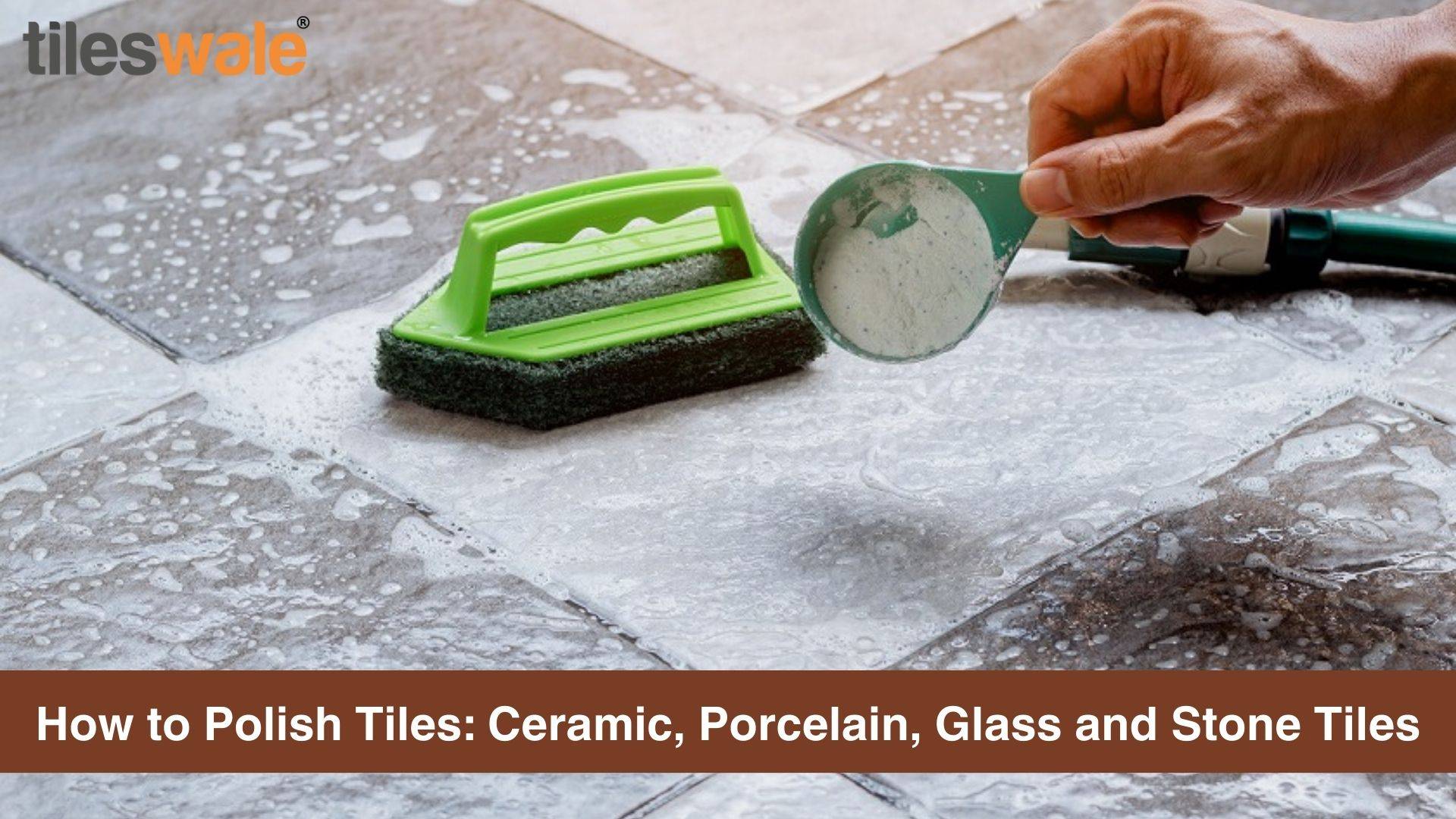
World's First Ceramic-Tile & Sanitaryware Live Marketplace. Get it on Google Play
Get it on App Store
World's First Ceramic-Tile & Sanitaryware Live Marketplace. Get it on Google Play
Get it on App Store
By Tileswale
In India, tiles are the go-to flooring material and there is a very good reason why. They are durable, elegant, and easy to clean, and their being stain-proof also helps to a large extent. However, even if tiles are low-maintenance, that does not mean they require no maintenance.
To keep your tiles as good as new, regular cleaning and polishing are required, as they are not resistant to scratches and physical damage. Experts recommend that your tiles be polished once every 4 to 5 months if there is a lot of foot traffic, even if there isn’t much, polishing once every 6 months won’t hurt.
There are different types of tiles and not all tiles can be cleaned the same way. In this blog, we will explore the various effective ways to polish them and let’s not leave any tile unturned. Pun intended.
Microfibre cloth
Microfiber mop
Buffing pad
Tile-specific polishing products (i.e., ceramic floor polish for ceramic tiles, wooden floor polish for wooden tiles, etc.)
White vinegar
Mild detergent
Brush with soft bristles for grout cleaning
Clean and warm water
Let's start with ceramic tiles, which are the most widely used tile type ever. They are incredibly low-maintenance and long-lasting. Maintaining their cleanliness is one thing, but polishing them would transform the space as a whole.
To create a mild cleaning solution that doesn't damage the tiles, combine ¼ cup white vinegar with 3 liters of water. Don't worry if the tiles are beyond saving; simply top off the bucket with an additional ¼ cup of vinegar. With a microfiber mop, gently clean the floor in circular motions.
After the floor has been mopped, buff it with a microfiber cloth or, if you have one, use a buffing machine to restore its original shine. After buffing, you can polish the tiles with a homemade polishing solution. For this, mix one part vinegar, three parts water, and a small amount of dishwashing detergent. Finally, wipe away any remaining moisture from the tiles with a microfiber cloth.
There are three types of porcelain tiles: glazed, textured, and unpolished. All of them use comparable cleaning supplies; the only difference is that extra care is needed for the textured porcelain tiles.
For porcelain, use a gentle cleaning agent. Therefore, use a non-acidic cleaning solution or combine ⅛ cup vinegar with 3 liters of water, and use a microfiber mop to scrub every tile surface. Before buffing the tiles with a microfiber mop, let them air dry or use a fan.
Glass tiles are prized for both their exquisite texture and exorbitant price. Because of their sensitivity to chemicals, it is crucial to remember that only lukewarm water and a small amount of mild detergent should be used because the likelihood of them getting scratched is very high. The tiles' surface can be cleaned with a microfiber cloth while avoiding the use of any abrasive sponges or brushes.
You can achieve a glossy look by buffing the glass tiles with a solution of equal parts water and vinegar. To do this, use a mop or microfiber cloth, and then rinse each glass tile's surface with cold water. The conventional baking soda and vinegar treatment is an option if there are still any hard stains.
If vinegar or soapy water is applied on a regular basis, stone tiles like slate and granite may get worn out. This is why people with expensive granite tiles usually opt for professional granite polishing services. The best solution for polishing stone tiles is baking soda. In between polishing, fill a bucket with water and use it to clean your rags. Meanwhile, make a polishing solution by combining ¼ cup baking soda with 3 cups of water. When applying the solution directly to the tiles, use a little elbow grease to insulate and add a layer of protection. To prevent any water from seeping in and destroying the stones, wipe it dry with a clean cloth.
Cleaning and polishing tiles can get overwhelming, especially when you have a considerably large house with a lot of floor and wall tiles. They require very little maintenance so it should not worry you for a few months after you have polished them.
It is important to understand what cleaning method must be used for different types of tiles to avoid any accidental damage. If this is too much for your busy schedule, you always have the option of hiring professional floor cleaners to help you. So gather your tools and your mom’s cleaning obsession with you to make your tiles shine while also preserving their beauty.
Submit your inquiries, we will see the rest
size:
Quantity:

+ Requirements

We have received your Inquiry. We will soon connect you with relevent Sellers via tileswale App. download now!!

